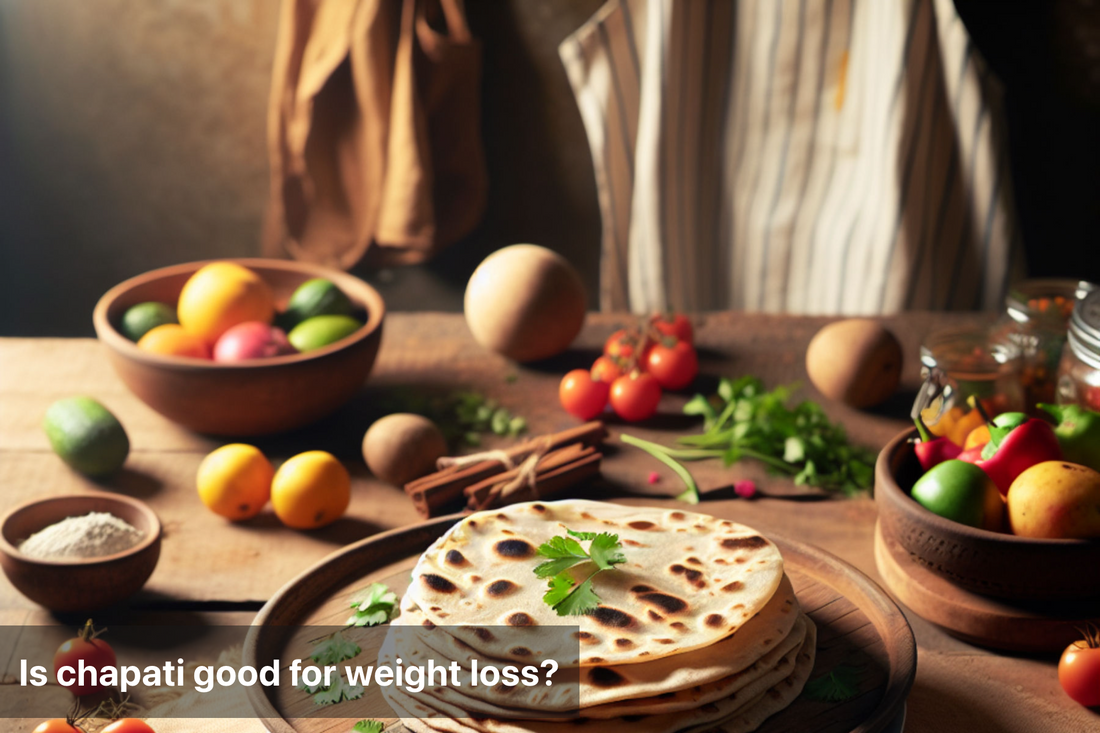
Is chapati good for weight loss?
Share
Chapati is a type of unleavened flatbread made from whole wheat flour, primarily consumed in South Asia, although its popularity has spread globally. This simple yet versatile bread serves as a staple in many households. Often enjoyed with various curries, vegetables, or lentils, chapati holds significant cultural importance in Indian, Pakistani, and Bangladeshi cuisines; it's not just food but also a part of many culinary traditions and rituals.
The nutritional composition of chapati is quite impressive. A standard serving contains essential macronutrients, including carbohydrates, proteins, and dietary fiber. These elements make it a nutritious choice that can align well with a balanced diet. The presence of fiber aids digestion and can contribute to a feeling of fullness, potentially reducing overall calorie intake.
Overall, integrating chapati into meals can be a healthy option. Its whole grain content provides sustained energy, making it suitable for those looking to manage their weight sensibly. If you enjoy eating chapati and want to maintain a healthy lifestyle, keeping these nutritional aspects in mind can help you make informed dietary choices.

Nutritional Value of Chapati
Here is the nutritional breakdown of one medium-sized chapati (40 grams):
Nutrient |
Amount per 40g |
|---|---|
Calories |
120 kcal |
Carbohydrates |
20 g |
Protein |
3 g |
Fat |
2 g |
Dietary Fiber |
3 g |
Iron |
1.5 mg |
Calcium |
10 mg |
Health Coach Pooja Shinde (MSc. Nutrition, food science & technology — diabetes educator) recommends “In the journey of weight loss, chapati stands as a testament that simple, wholesome foods can fuel big transformations.”
Chapati in a Weight Loss Diet
Chapati can be an excellent addition to a weight-loss diet for the following reasons:
1. Rich in Fiber
Whole wheat chapati is high in dietary fiber, which aids digestion and keeps you feeling full for longer. This reduces the likelihood of overeating and helps maintain a calorie deficit.
2. Low Glycemic Index (GI)
The low GI of chapati ensures a slow and steady release of glucose into the bloodstream, helping to stabilize blood sugar levels and control cravings.
3. Complex Carbohydrates
Unlike refined flour-based foods, chapati contains complex carbohydrates that provide sustained energy and prevent sudden hunger pangs.
4. Moderate Calorie Count
A single chapati is relatively low in calories, making it a better option than calorie-dense alternatives like bread or parathas.
5. Source of Plant-Based Protein
Chapati contains a moderate amount of protein, which is essential for muscle maintenance and satiety during weight loss.
Comparison of Chapati with Other Carbohydrate Sources
Food Item |
Calories (per 40g) |
Fiber (g) |
GI |
|---|---|---|---|
Chapati |
120 |
3 |
Low |
White Bread |
110 |
0.5 |
High |
Brown Rice |
140 |
1.5 |
Medium |
Oats |
150 |
4 |
Low |
Tips for Making Healthier Chapatis
Use whole wheat or multigrain flour instead of refined flour.
Avoid using excessive oil or ghee in the dough.
Roll the chapati thin to keep its calorie count moderate.
Serve with protein-rich or fiber-dense side dishes to create a balanced meal.

Potential Drawbacks of Chapati for Weight Loss
Overconsumption: Eating too many chapatis can add up in calories, negating your weight-loss efforts.
Refined Flour Variants: Some commercially available chapatis use refined flour, which lacks fiber and is less nutritious.
Accompaniments: High-fat or high-sugar accompaniments can offset the health benefits of chapati.
Summary
In conclusion, chapati has emerged as a promising addition to a weight loss diet. With its balanced nutritional profile—offering essential carbohydrates, protein, and fiber—chapati can effectively satiate hunger while contributing to overall health. When consumed in moderation, it provides the energy needed for daily activities without excessive calorie intake.
To incorporate chapati into a weight loss regimen, consider portion control; a single chapati can be a perfect base for wholesome meals. Pair it with high-protein foods like lentils or lean meats and add plenty of vegetables. This not only boosts the meal's nutritional value but also enhances satiety, helping you feel full longer.
If you're looking to shed some pounds, chapati can certainly be your ally. Its versatility allows for various recipes, ensuring you won't get bored. Always listen to your body and adjust portion sizes as needed. With these mindful practices, chapati can smoothly fit into your journey towards healthier eating and weight loss.
FAQs
1. Can I eat chapati daily while trying to lose weight?
Yes, chapati can be part of your daily diet, provided you monitor your portion sizes and choose healthy pairings.
2. Is chapati better than rice for weight loss?
Both chapati and rice have their benefits, but chapati’s higher fiber content and lower GI make it a better option for weight loss.
3. Can I eat chapati at night?
Yes, but ensure you consume it in moderation and pair it with light, healthy sides for optimal digestion.
4. How many chapatis should I eat per day for weight loss?
This depends on your individual calorie needs, but 2-3 chapatis per day, spread across meals, is generally effective.
5. Are multigrain chapatis better for weight loss?
Yes, multigrain chapatis are richer in fiber, vitamins, and minerals, making them a healthier choice.
